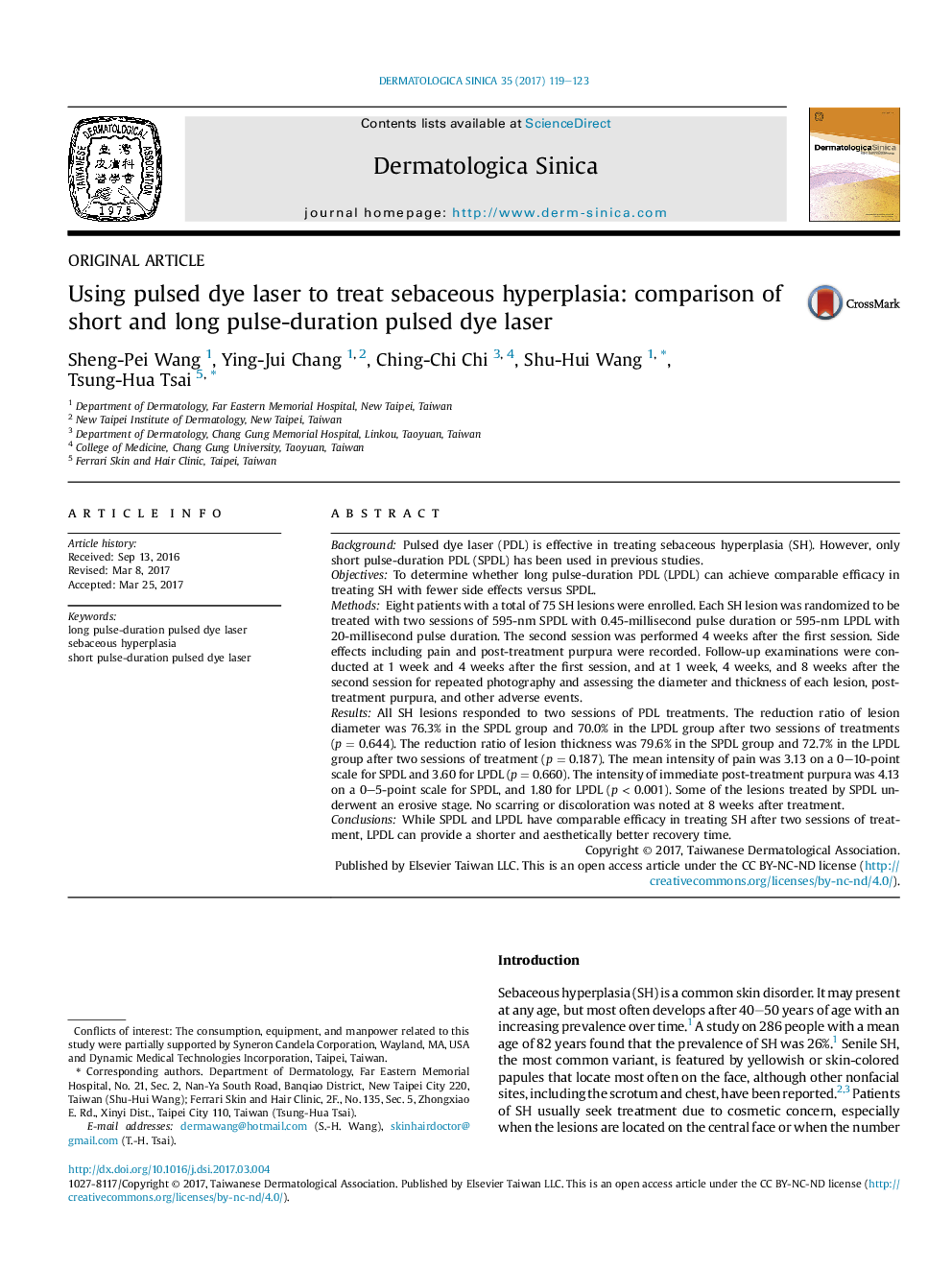| Article ID | Journal | Published Year | Pages | File Type |
|---|---|---|---|---|
| 5645866 | Dermatologica Sinica | 2017 | 5 Pages |
BackgroundPulsed dye laser (PDL) is effective in treating sebaceous hyperplasia (SH). However, only short pulse-duration PDL (SPDL) has been used in previous studies.ObjectivesTo determine whether long pulse-duration PDL (LPDL) can achieve comparable efficacy in treating SH with fewer side effects versus SPDL.MethodsEight patients with a total of 75 SH lesions were enrolled. Each SH lesion was randomized to be treated with two sessions of 595-nm SPDL with 0.45-millisecond pulse duration or 595-nm LPDL with 20-millisecond pulse duration. The second session was performed 4 weeks after the first session. Side effects including pain and post-treatment purpura were recorded. Follow-up examinations were conducted at 1 week and 4 weeks after the first session, and at 1 week, 4 weeks, and 8 weeks after the second session for repeated photography and assessing the diameter and thickness of each lesion, post-treatment purpura, and other adverse events.ResultsAll SH lesions responded to two sessions of PDL treatments. The reduction ratio of lesion diameter was 76.3% in the SPDL group and 70.0% in the LPDL group after two sessions of treatments (p = 0.644). The reduction ratio of lesion thickness was 79.6% in the SPDL group and 72.7% in the LPDL group after two sessions of treatment (p = 0.187). The mean intensity of pain was 3.13 on a 0-10-point scale for SPDL and 3.60 for LPDL (p = 0.660). The intensity of immediate post-treatment purpura was 4.13 on a 0-5-point scale for SPDL, and 1.80 for LPDL (p < 0.001). Some of the lesions treated by SPDL underwent an erosive stage. No scarring or discoloration was noted at 8 weeks after treatment.ConclusionsWhile SPDL and LPDL have comparable efficacy in treating SH after two sessions of treatment, LPDL can provide a shorter and aesthetically better recovery time.
